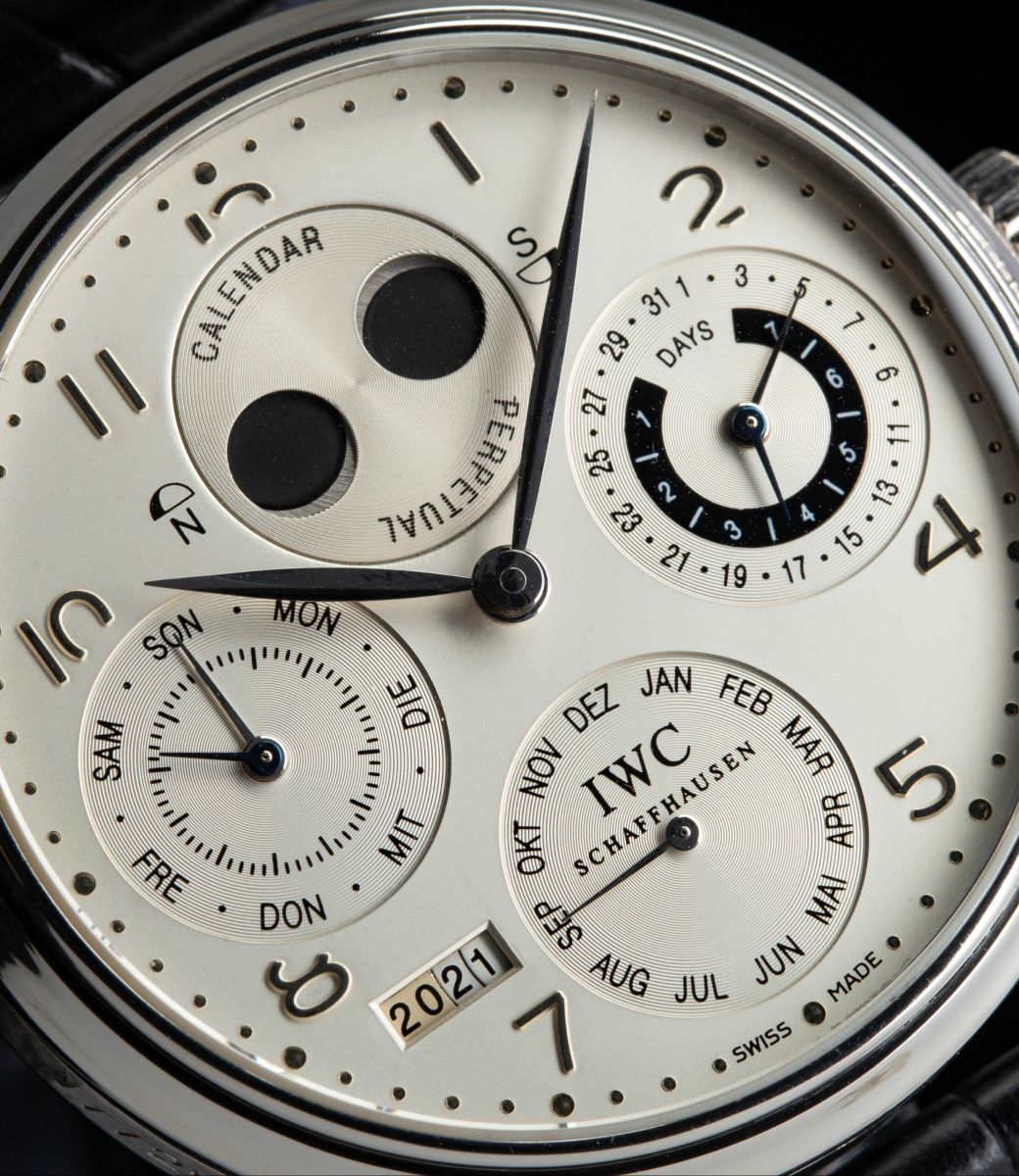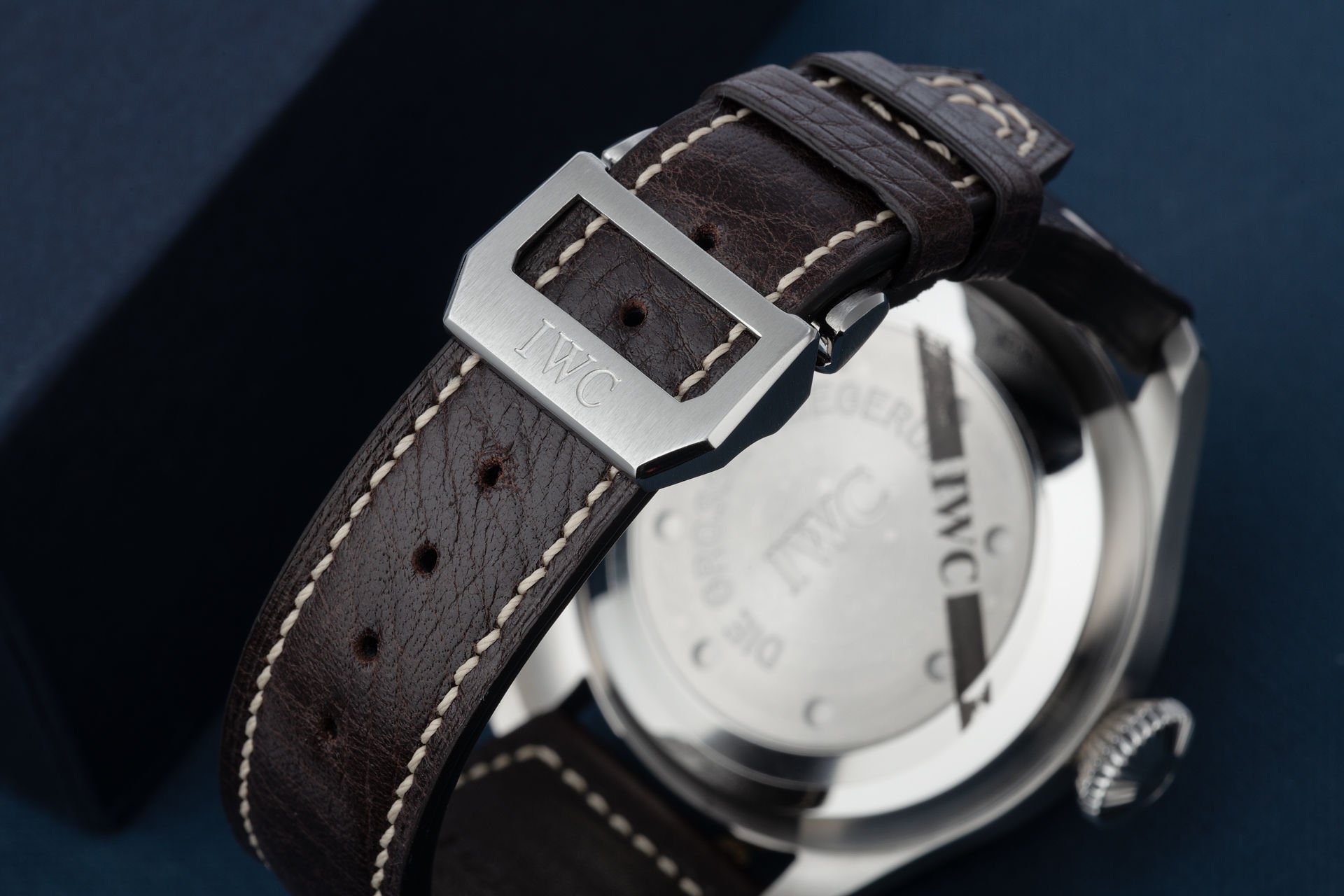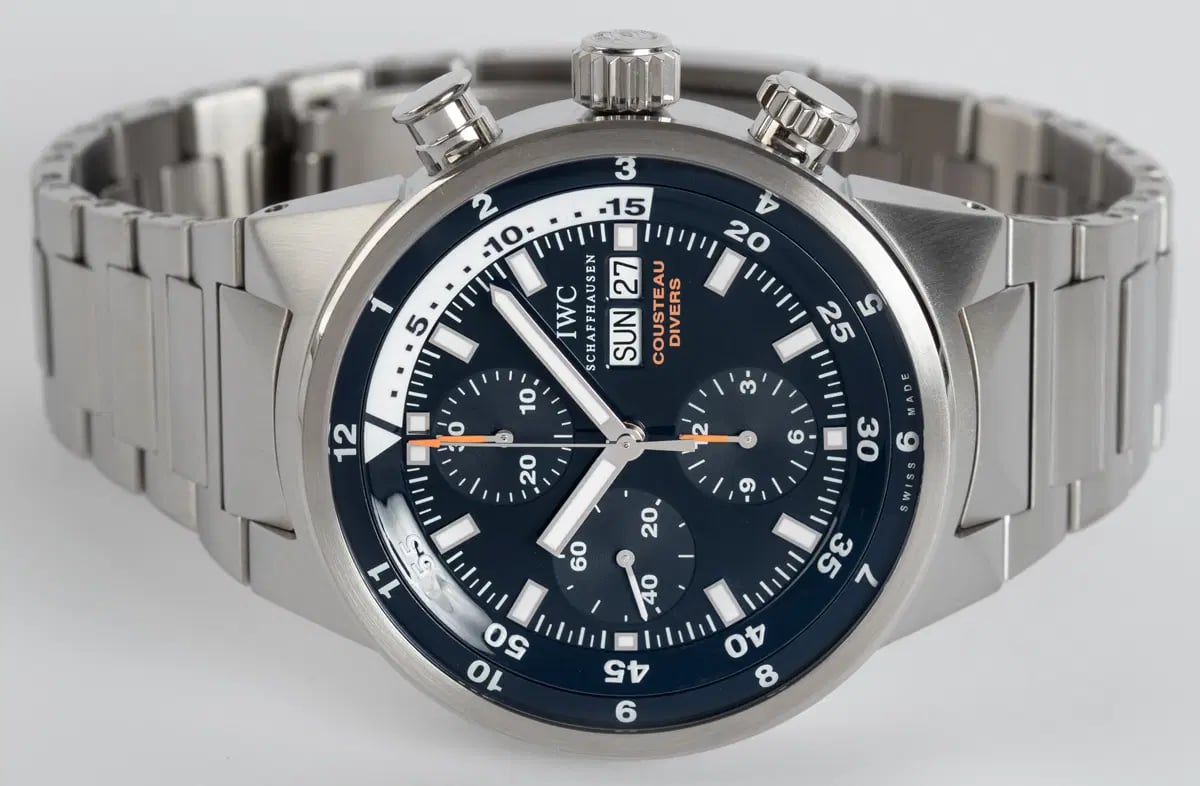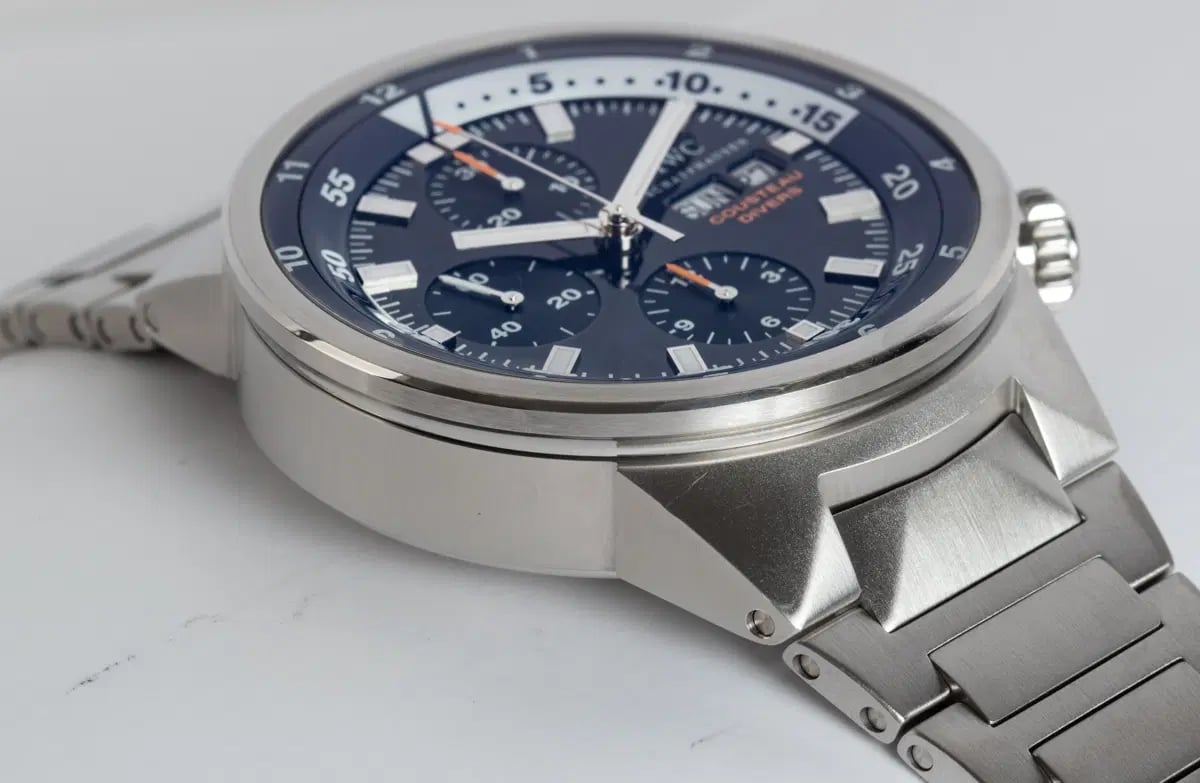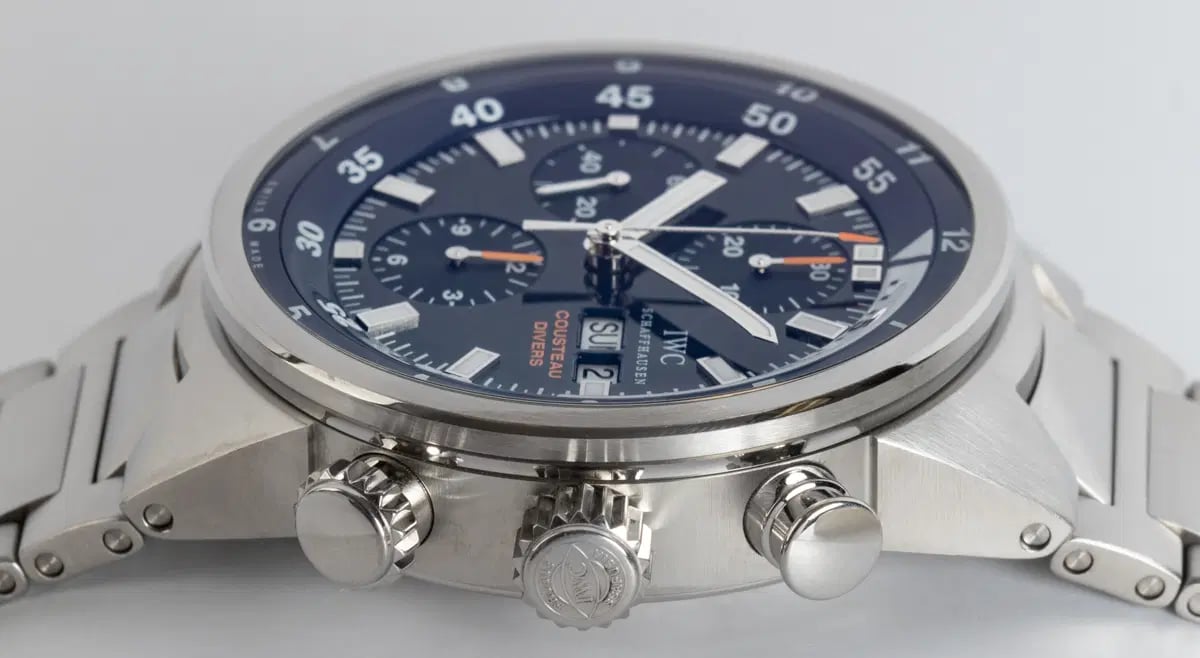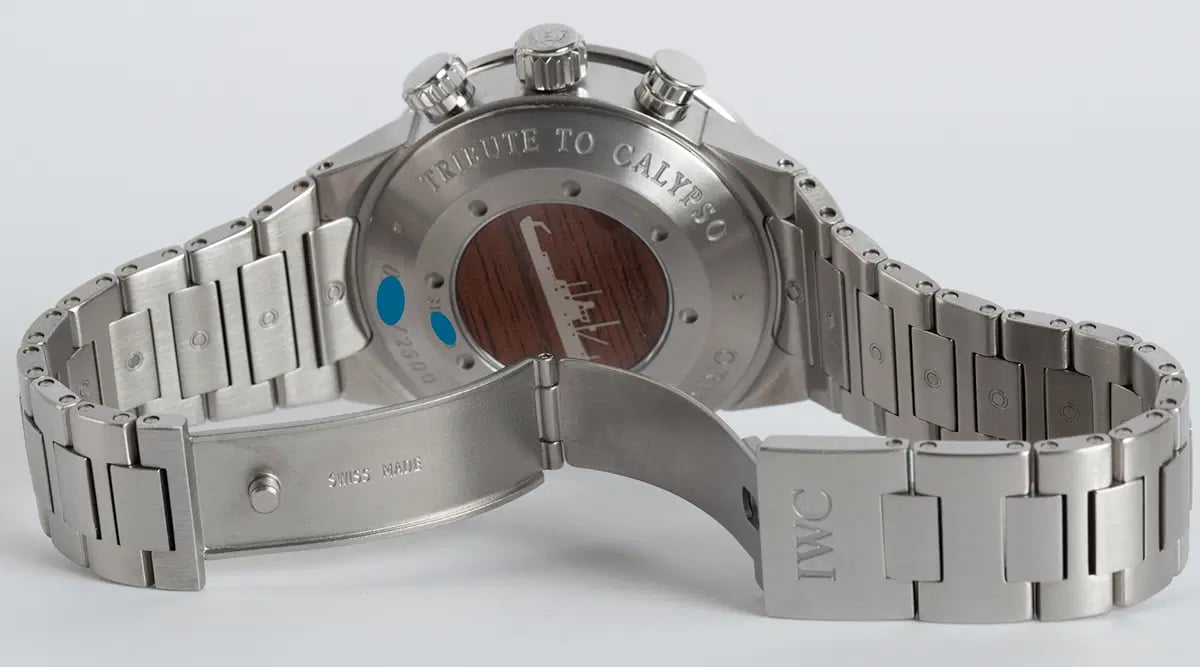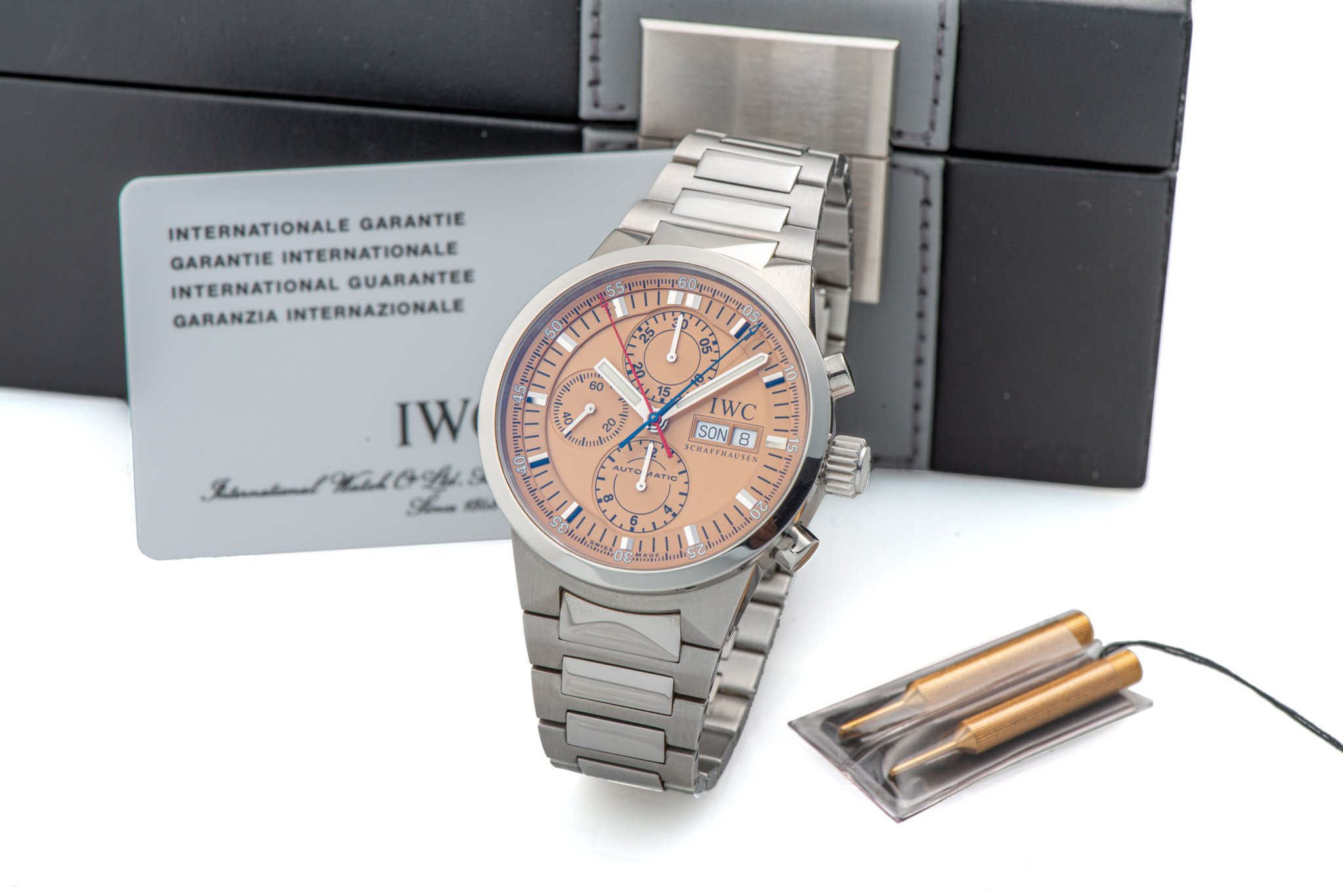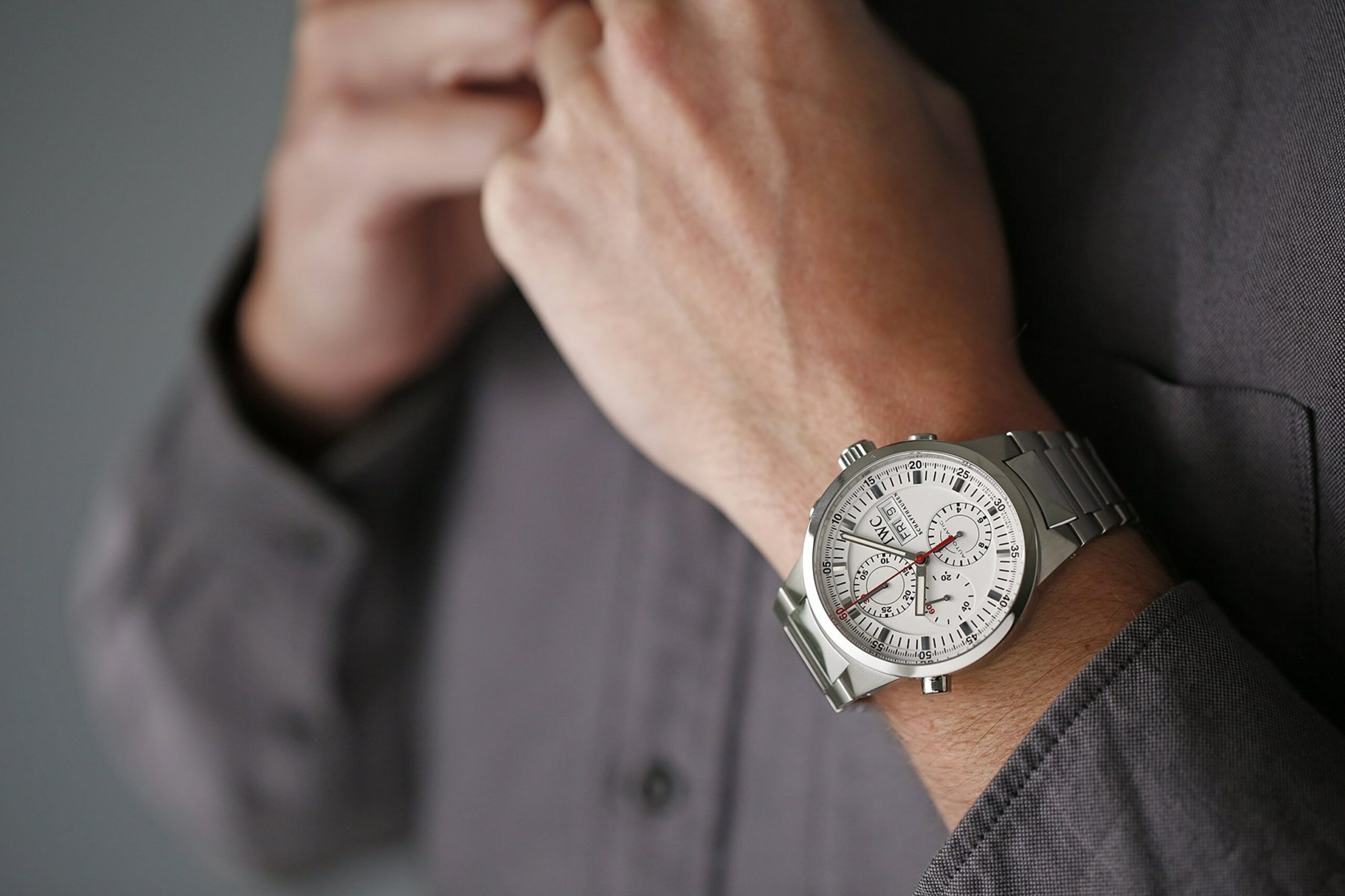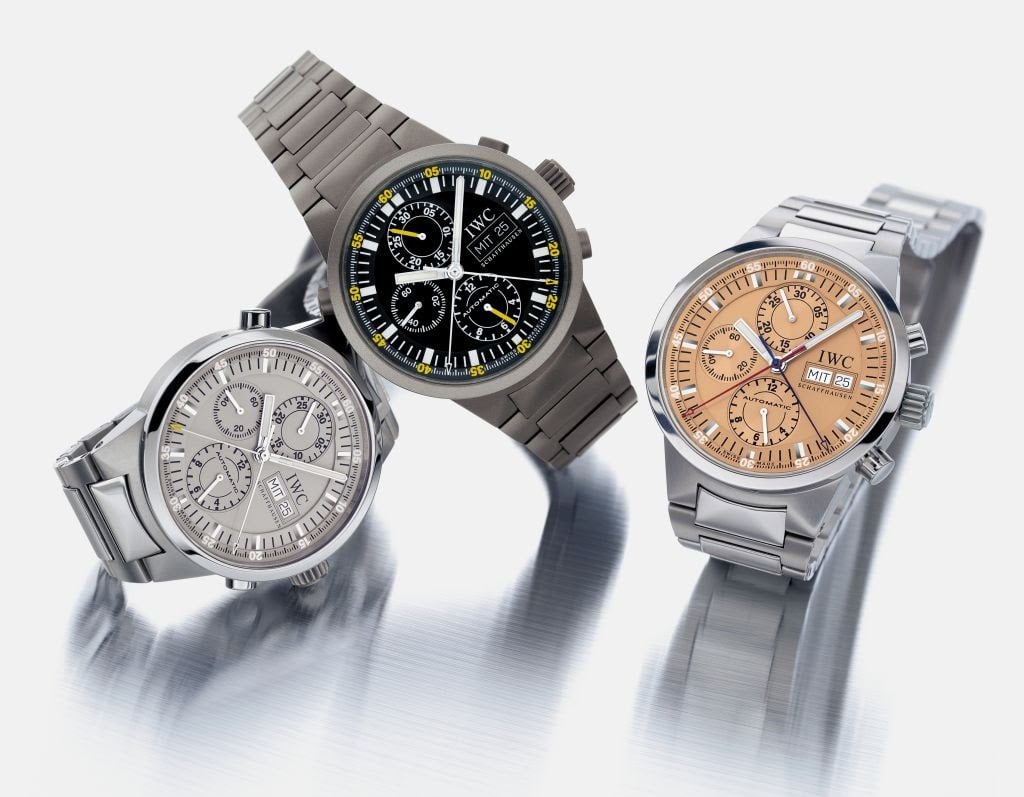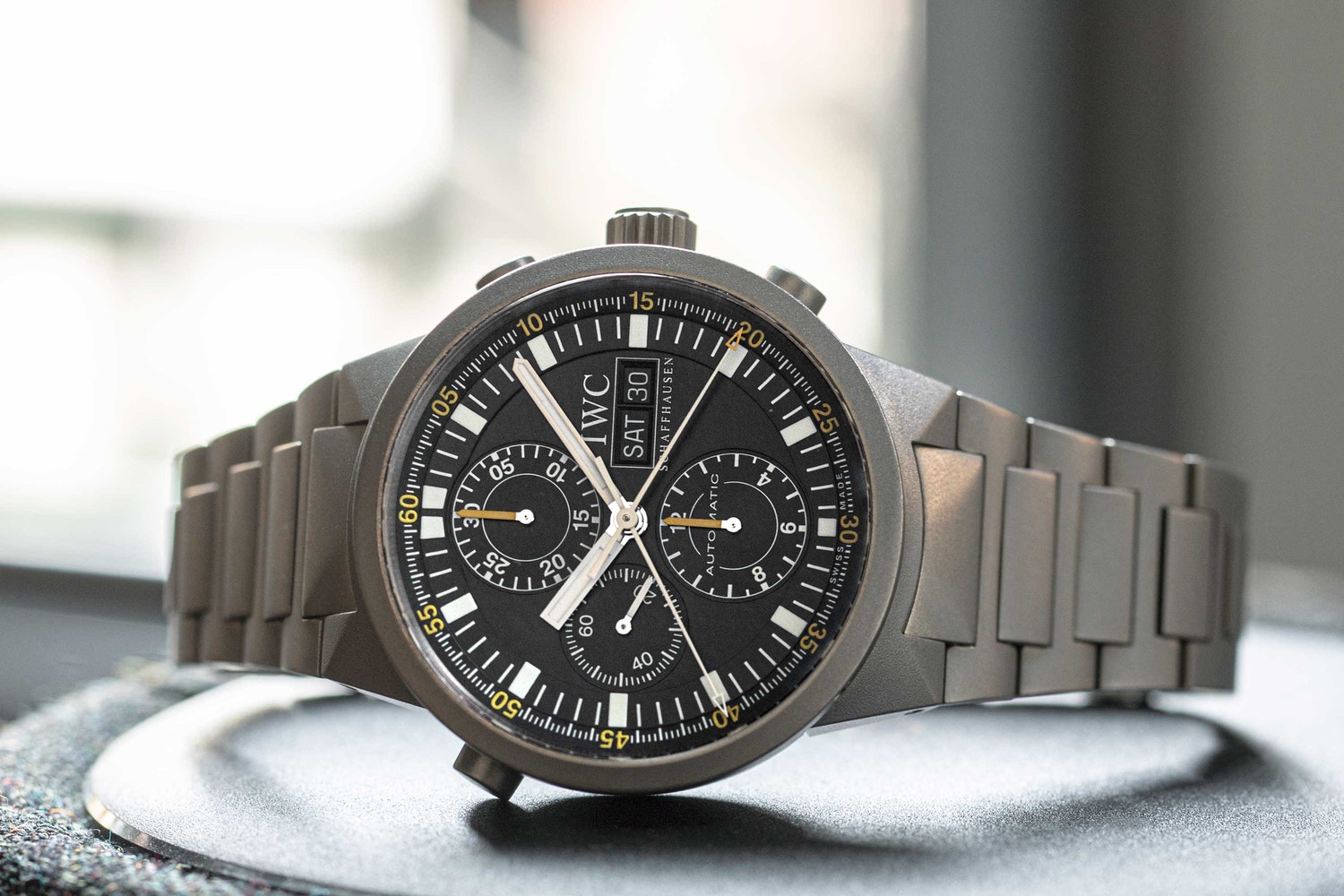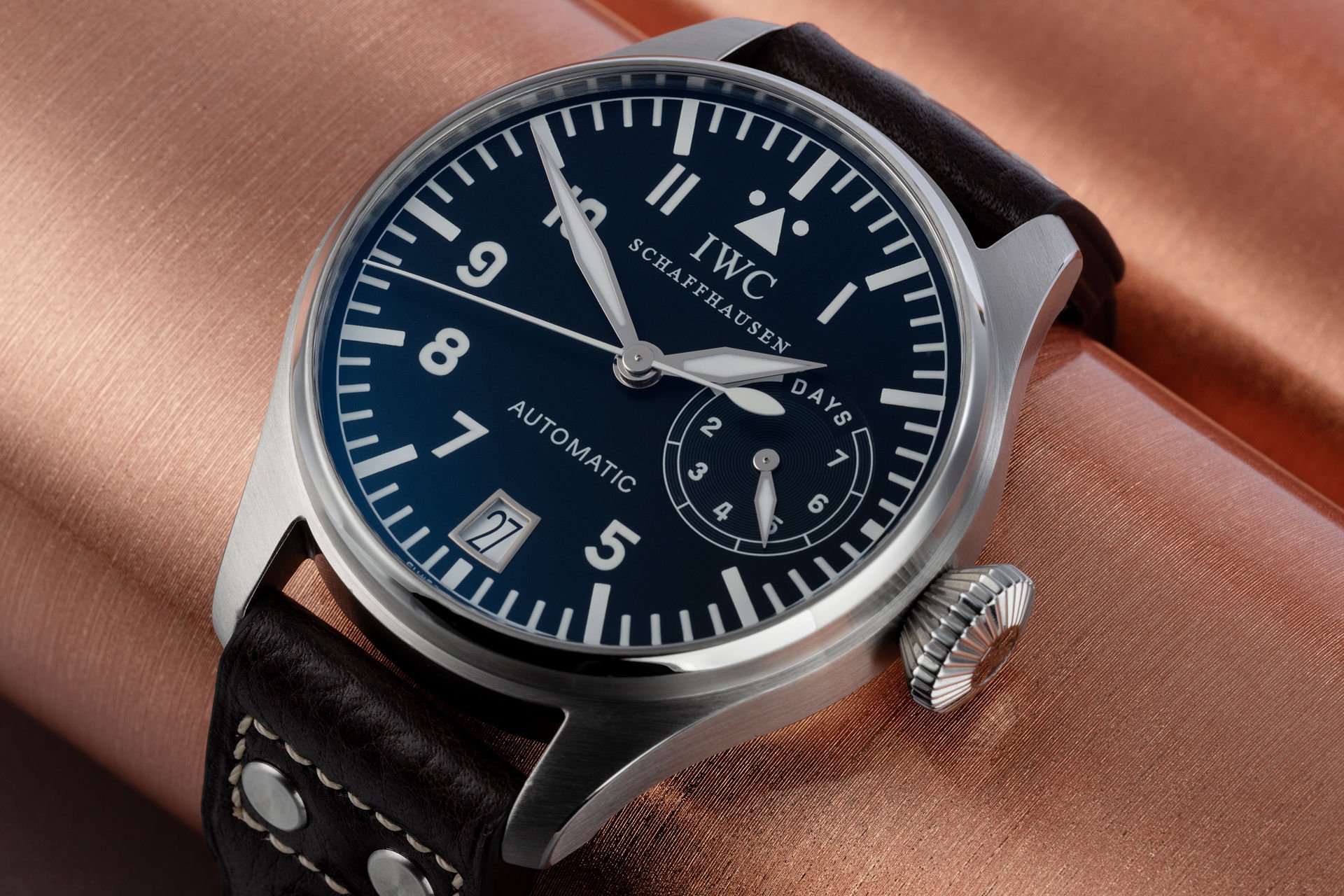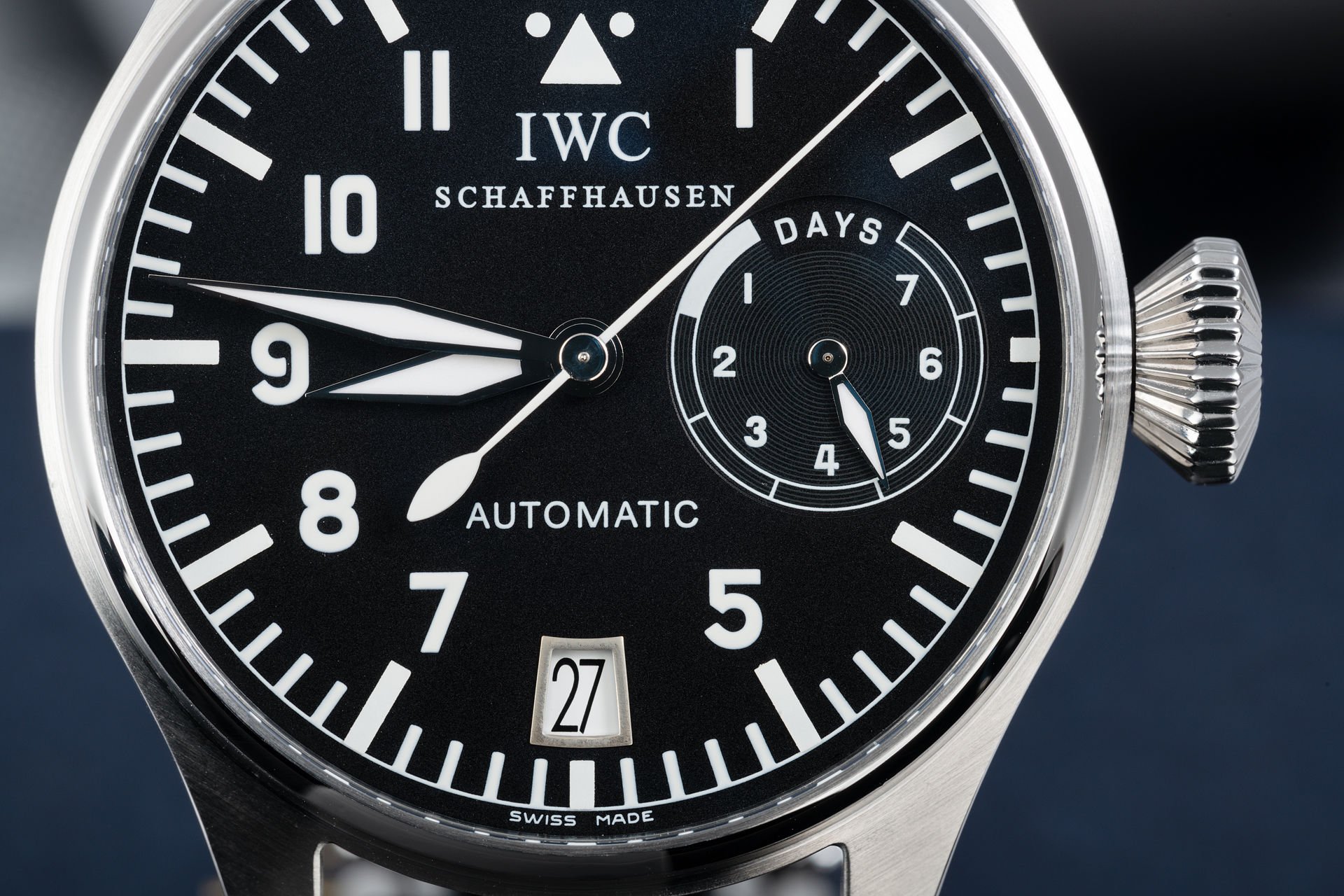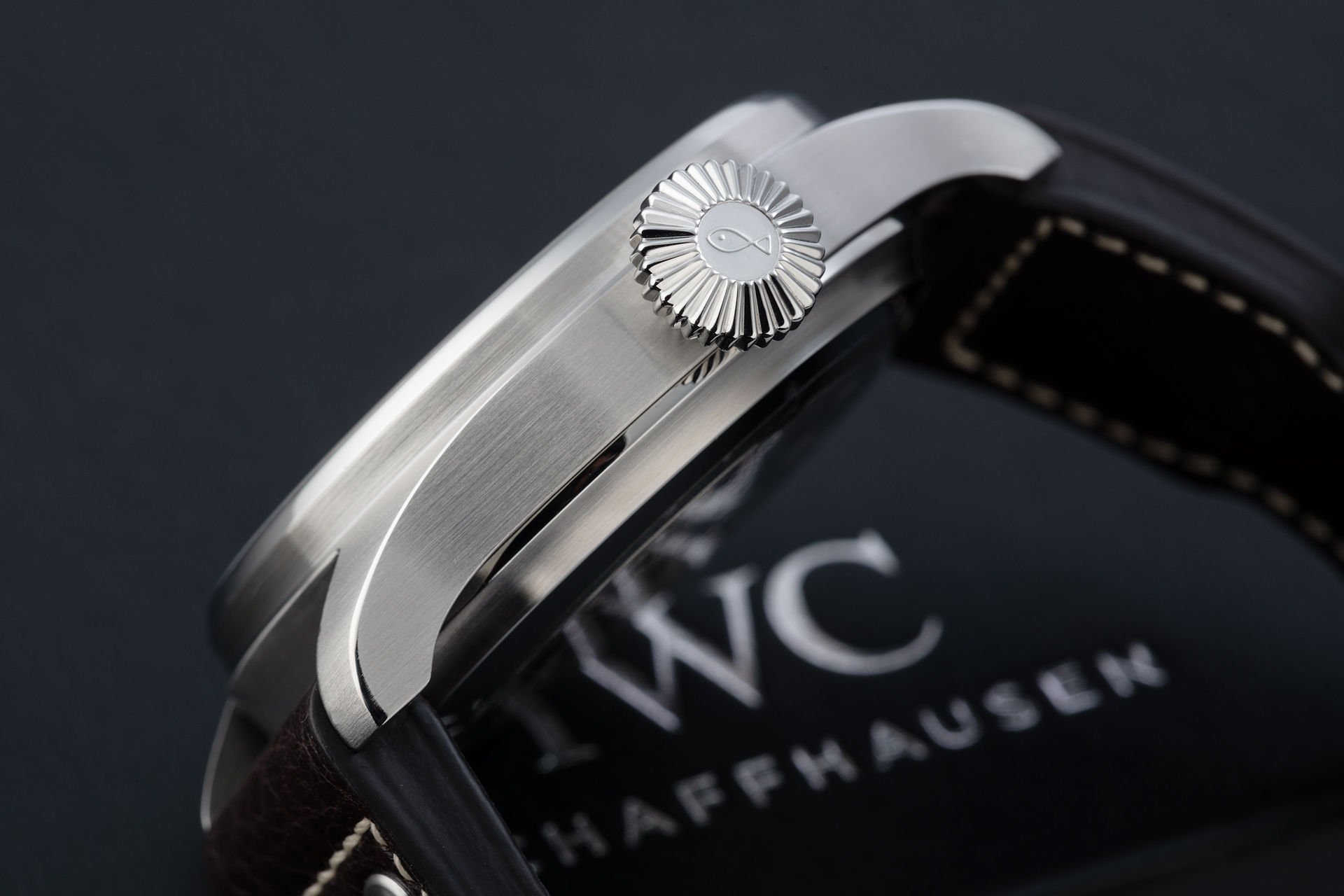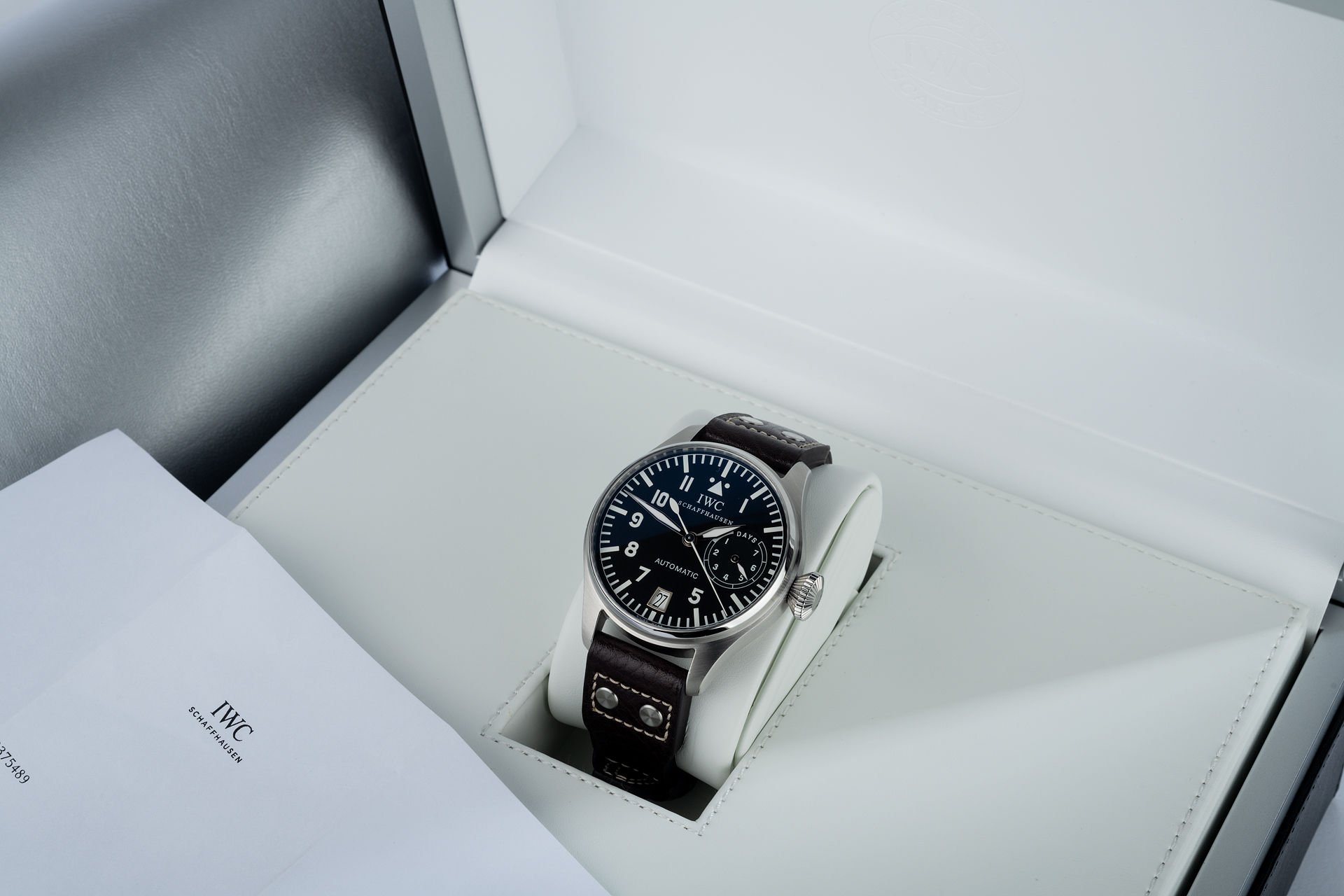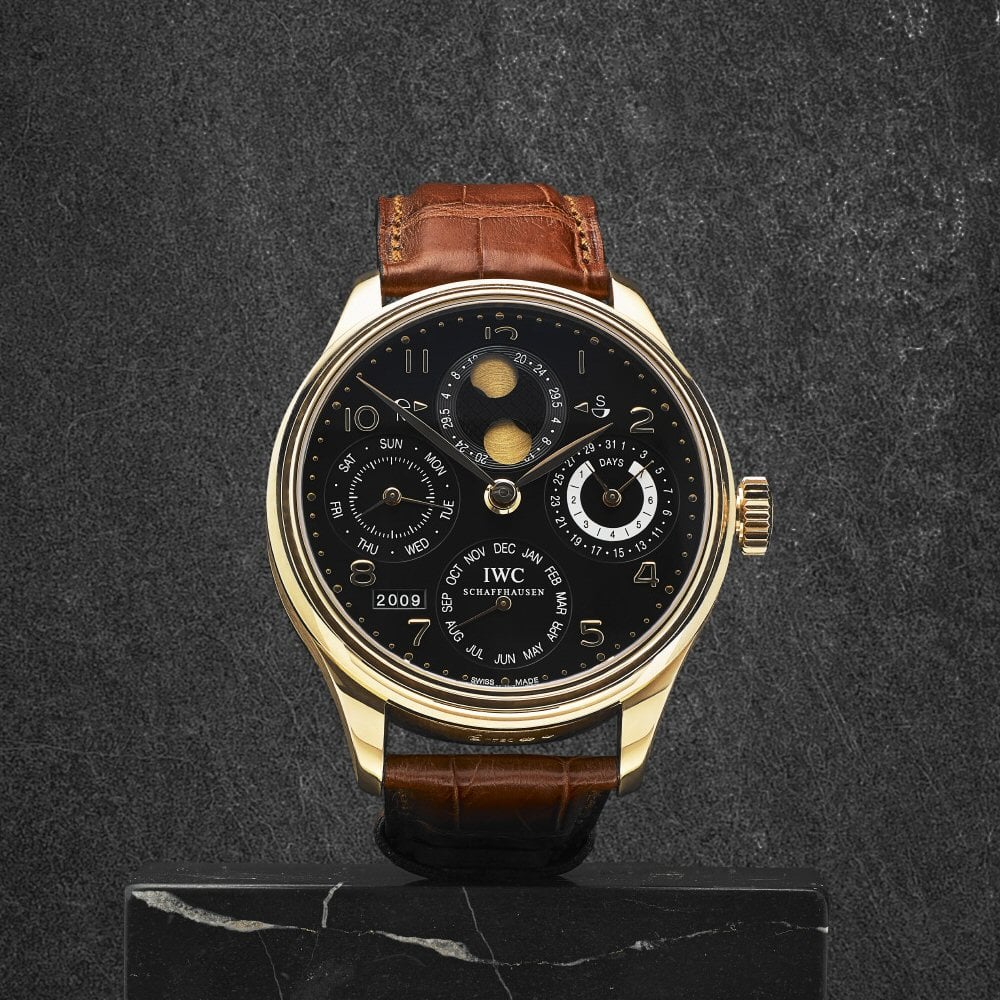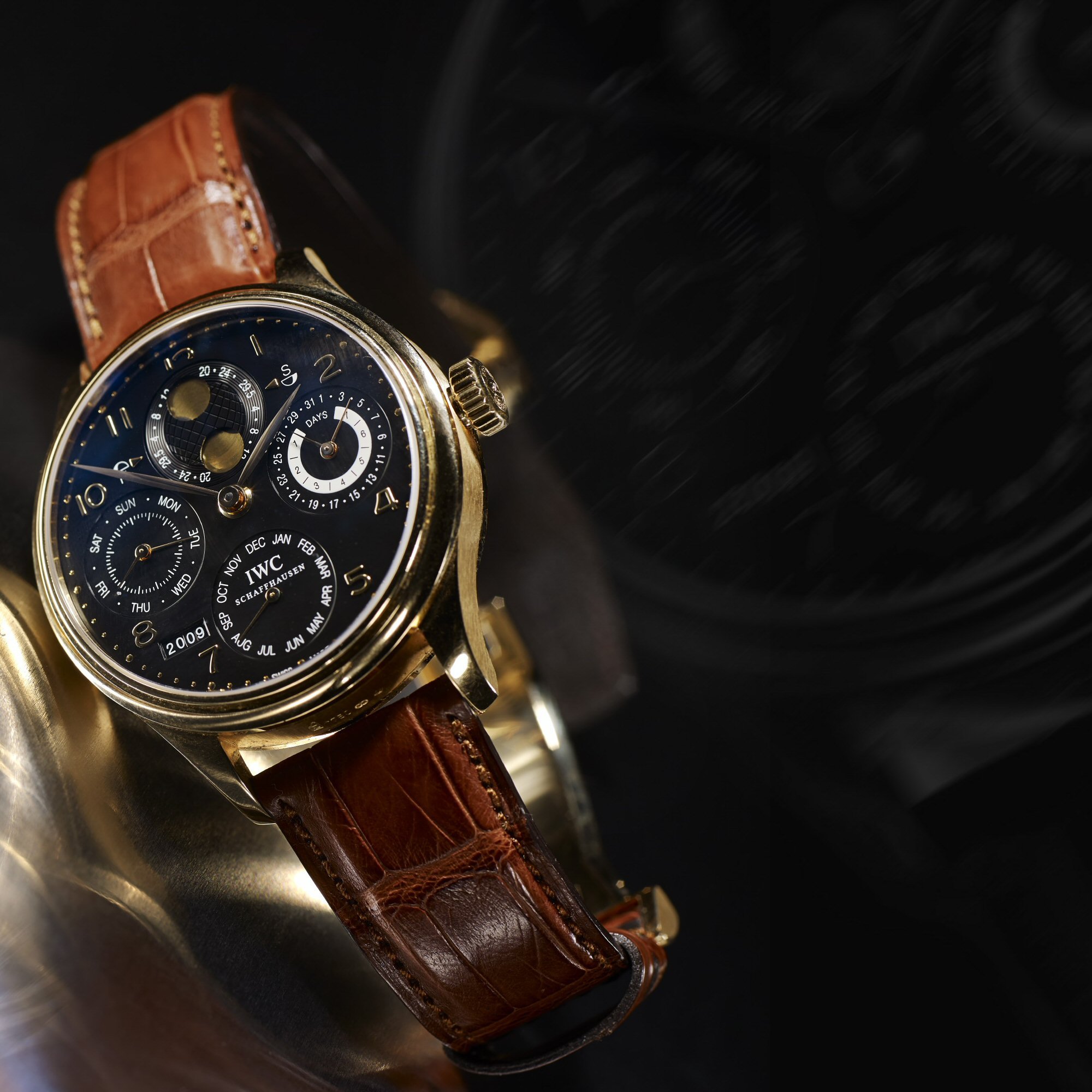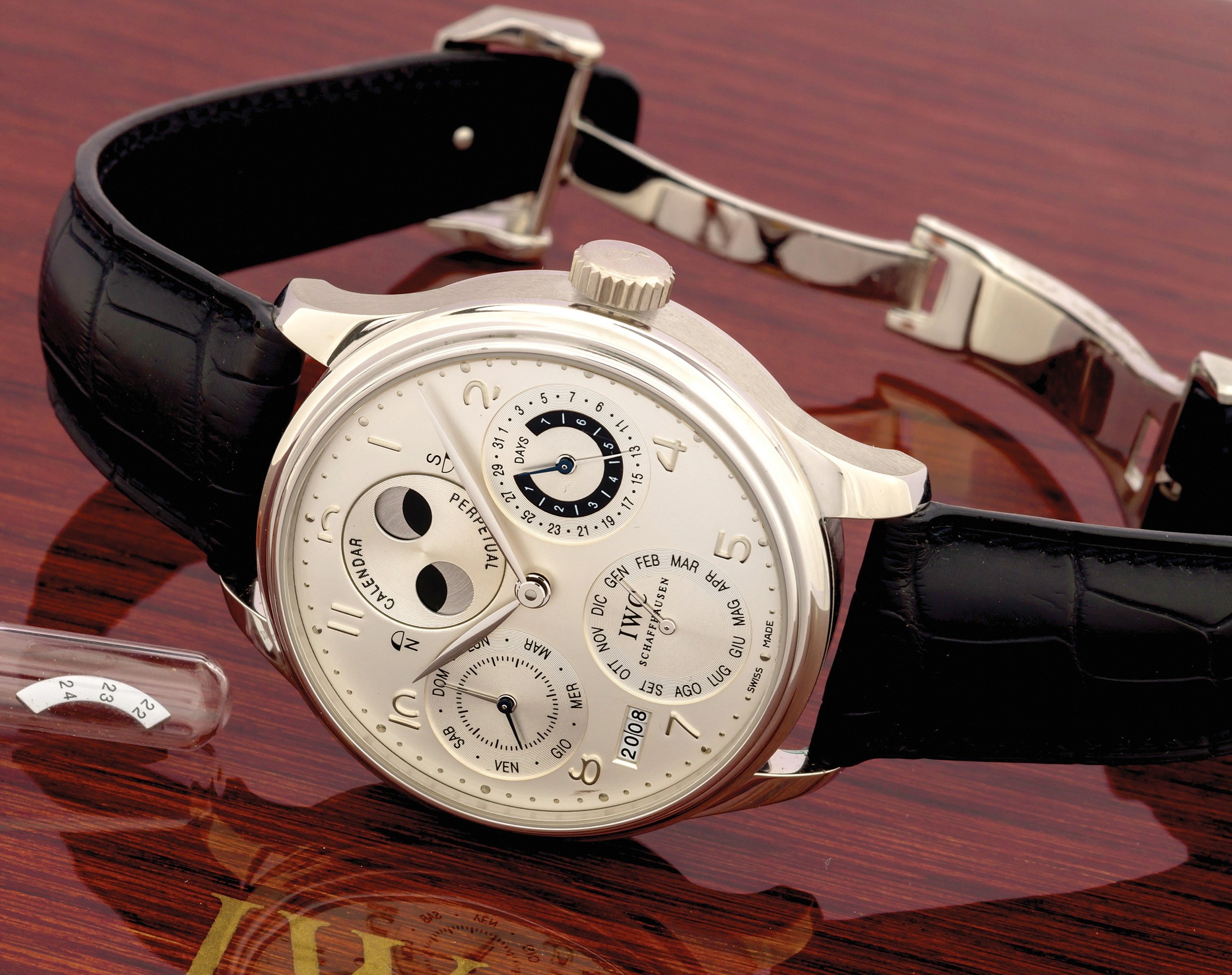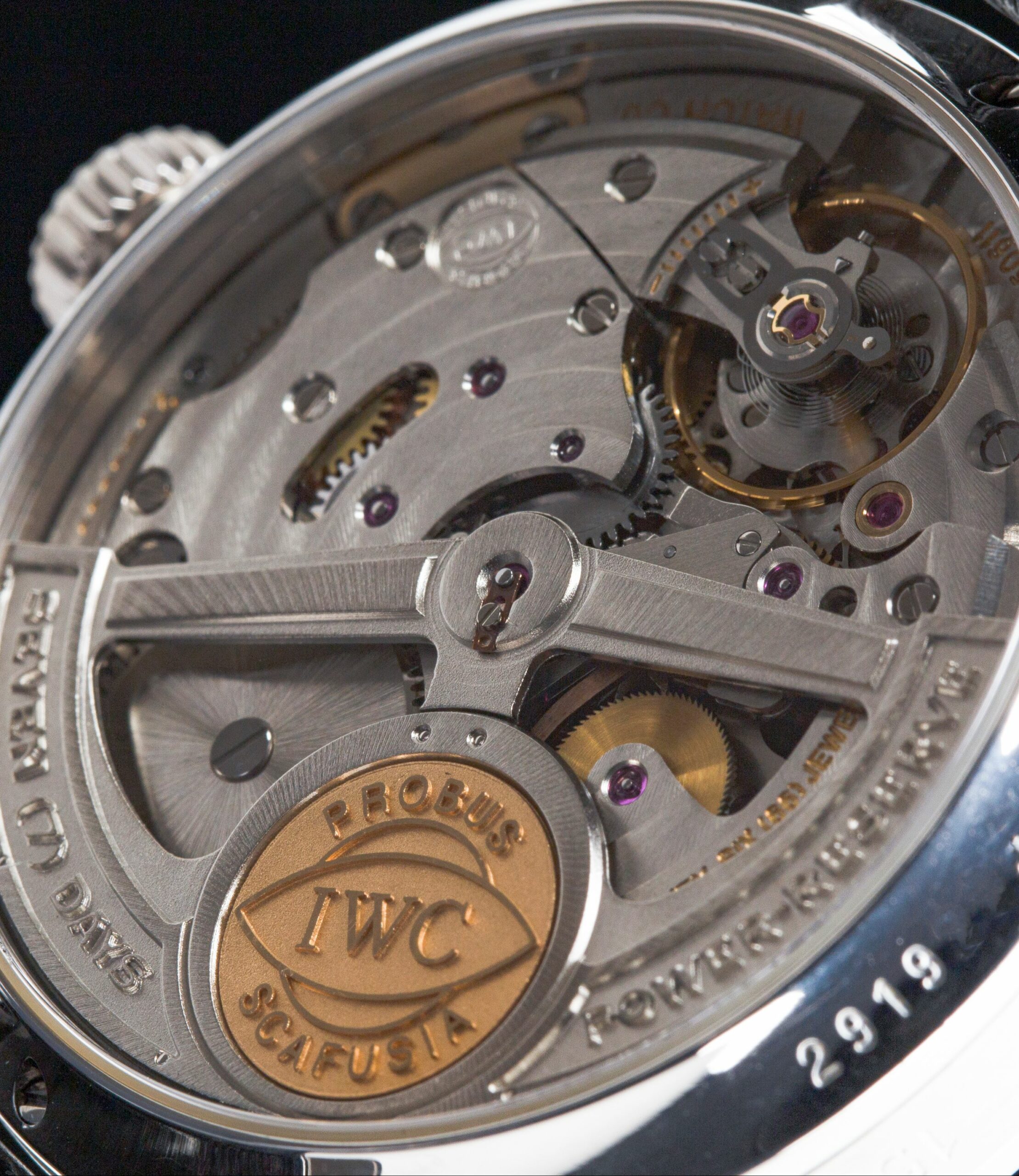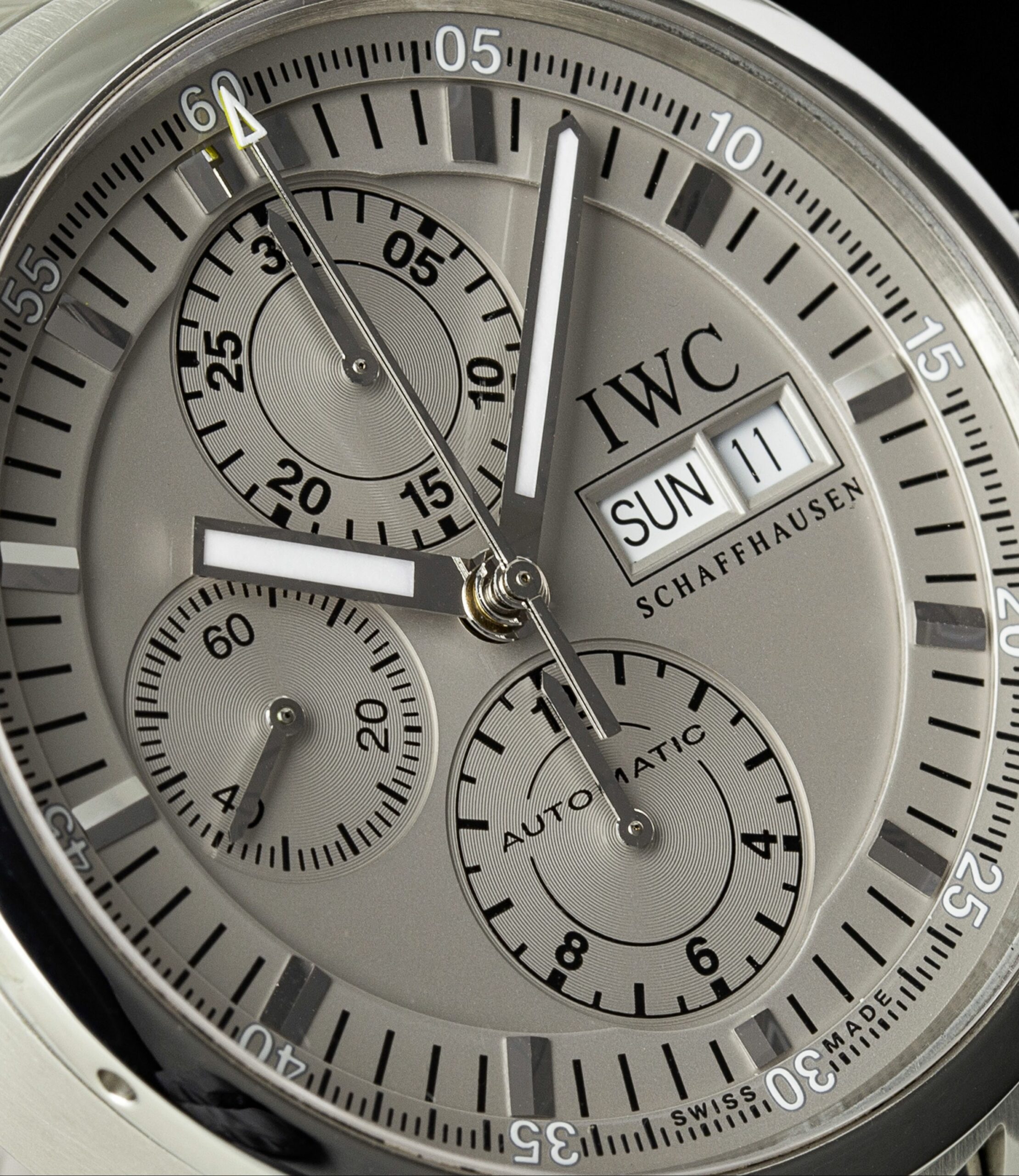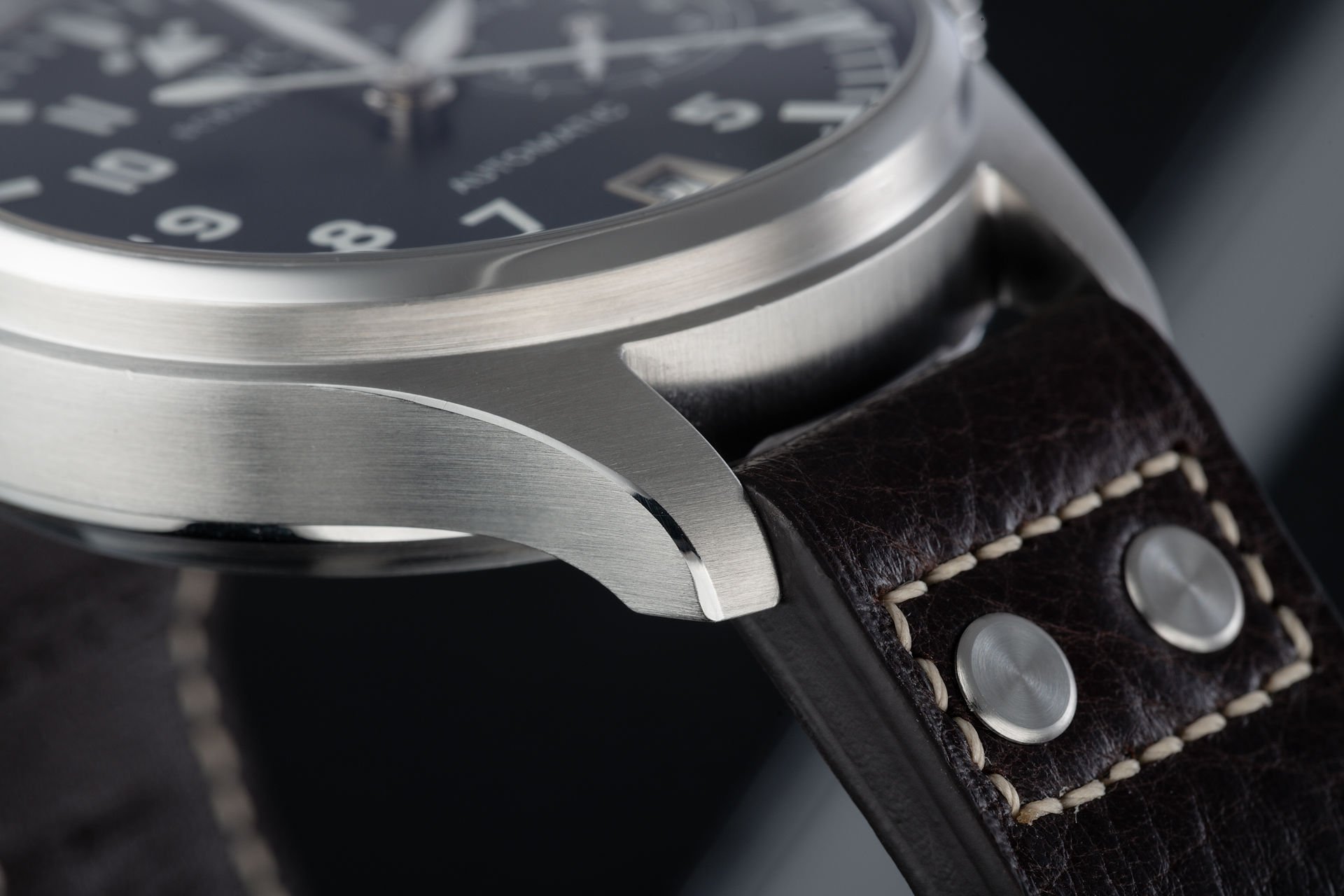Buying Guide: The Best IWC Watches From The 2000s
We like to talk about vintage watches a lot within the Fratello team. Though most of what we write about is largely focused on the most recent releases and developments, for many of us, a lot of the fun can be found in the sometimes weird and often wonderful world of vintage watches. It’s a world full of history, remarkable watches, incredible stories, and quirky details. It inspired us to come up with a series of articles focusing on the best watches per decade from a select group of brands. Some of them are priceless, some of them are still affordable. In this installment, we will take a look at the best IWC watches from the 2000s.
By the turn of the millennium, Switzerland had proudly reclaimed its title as the watchmaking capital of the world. The 2000s, in many ways, formed the blueprint for the watch industry as we know it today. By the time the 2000s came around, mechanical watches were incredibly popular. Instead of just selling instruments that told the time, the major brands became cornerstones in the world of luxury goods, and the watch industry was thriving.
We saw brands being bought by conglomerates that turned into the luxury powerhouses they are today. But the 2000s was also the decade that saw the rise of independent brands alongside the industry’s big players. Small brands made it their goal to push the envelope of watchmaking in terms of design and technological developments. In the early 2000s, we also saw watches increase in size like never before. Panerai, Audemars Piguet, Hublot, and IWC enjoyed a great rise in popularity with their oversized watches. They will all be part of the best watches of the 2000s.
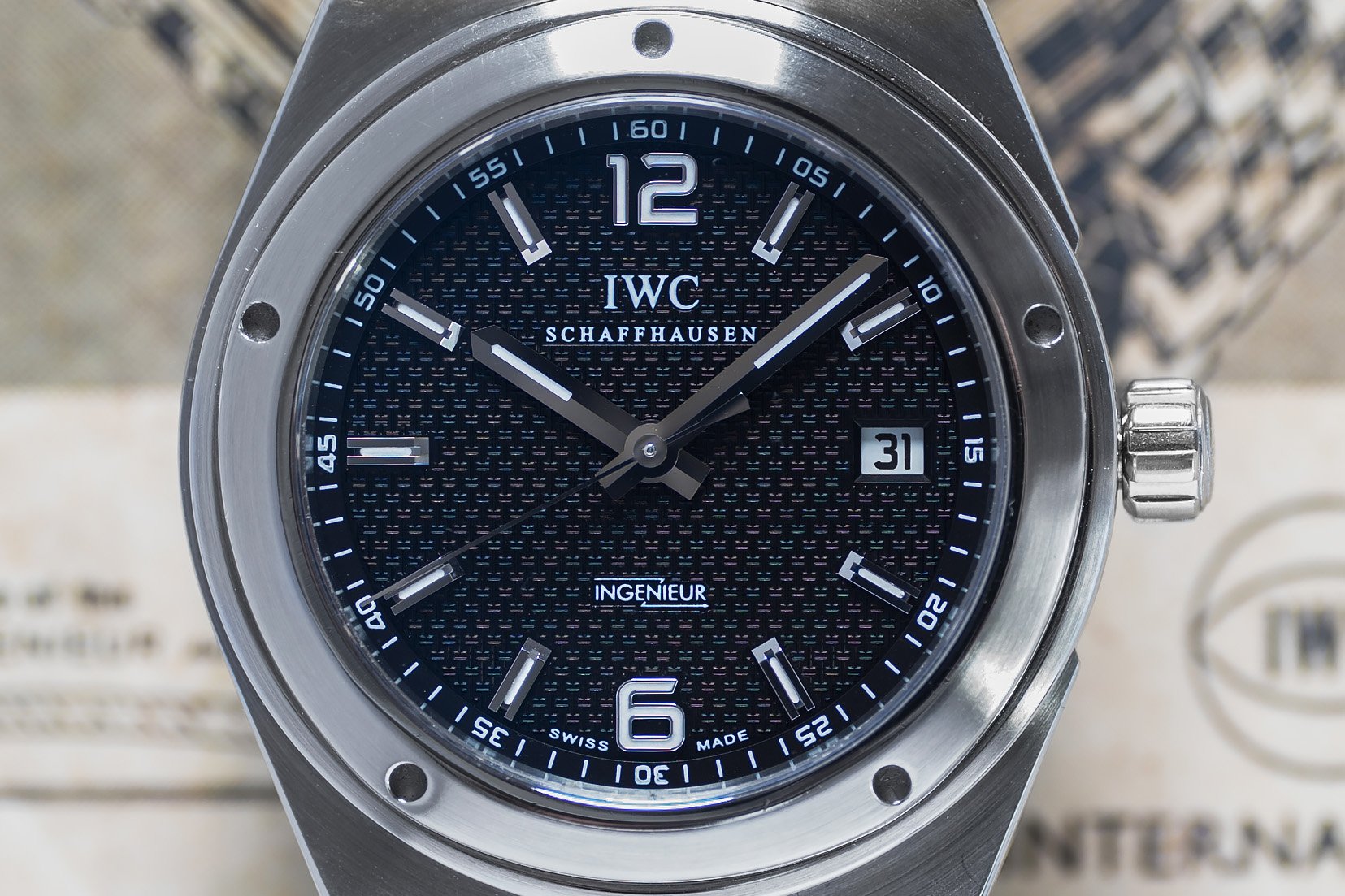
Image courtesy of WatchWorks Haarlem
IWC in the 2000s
The popularity of IWC really took off in the 2000s. After a successful decade in the 1990s with a string of amazing watches, the brand made a big break in the 2000s after becoming part of the Richemont Group. In 1991, the legendary Günther Blumlein founded the LMH Group with a 100% stake in IWC, a 90% stake in A. Lange & Söhne, and a 60% stake Jaeger-LeCoultre. Richemont acquired the LMH Group in 2000, and in 2002, Georges Kern became the new IWC CEO. With Kern at the helm, IWC grew into a hugely popular brand and reached a wider audience.
The secret to IWC’s success was a combination of great product development combined with Kern’s marketing tactics. When it comes to product development, IWC introduced the famous in-house caliber 5000 in 2000. The movement is known for its seven-day power reserve combined with IWC’s Pellaton automatic winding system. The 5000-series powered the Portuguese Automatic 2000 and IWC’s famous Big Pilot, introduced in 2002. In 2003, IWC introduced the Portuguese Perpetual Calendar, and the Spitfire line was added to the brand’s Pilot’s Watches collection. In 2004, the brand introduced the new Aquatimer collection, followed a year later by a new Genta-inspired Ingenieur. All this shows that in the 2000s, IWC was one of the most successful Swiss brands. Let’s look at five of the most remarkable watches from that era.
The Entry Point — IWC Aquatimer Chronograph Cousteau Tribute to Calypso ref. IW3782-01
As I just mentioned, IWC introduced the new Aquatimer collection in 2004. Previously, the Aquatimer name had been part of the GST collection. In 2004, however, IWC decided to make it a separate collection of dive watches. The Aquatimer name was first introduced in 1967. The first Aquatimer was created to address the increasing popularity of recreational scuba diving. If you look at the first Aquatimer ref. 812AD and compare it to the 2004 Aquatimers, you will see similarities. In particular, the regular automatic Aquatimer ref. 3548 takes design cues from the original watch with its internal diving bezel and dual crowns. In the years that followed, IWC released a great variety of different models in different colors.
The Aquatimer models that have always had a special place in my heart are the Cousteau divers. In 2006, IWC released a very special limited-edition Cousteau diver. The IWC Aquatimer Chronograph Cousteau Tribute to Calypso ref. IW3782-01 is still a beauty to this day. The one reason is that the watch has a wooden inlay on the case back, and it is wood from Jacques Cousteau’s famous research vessel, the Calypso. It was a brilliant opportunity to own a piece of history. IWC produced 2,500 pieces of the watch, and it has become a collector’s favorite. It’s also one of my favorite IWC watches ever. Like so many of us, when I was younger, I was fascinated by Cousteau’s films. I still remember as if it were yesterday that every Saturday afternoon when I was a teenager, there would be a Cousteau documentary on Dutch television.
Owning a piece of history
To be able to wear a watch that contains a part of the famous Calypso was therefore mind-blowing when IWC’s ‘Tribute to Calypso’ came out. The watch is a diver’s chronograph that was part of a series of Cousteau divers that IWC released. The first was an automatic version in 2004 with a beautiful blue dial and orange accents. Mike actually wrote about it for one of his Wrist Game, Crying Shame articles. This 2006 Tribute to Calypso also features a blue dial but with contrasting white details. The watch only features a few hints of orange in the form of the name Cousteau Divers, the sub-register hands, and the tip of the central chronograph hand. I love that the orange is not as prominent as on the other Cousteau divers.
The watch features a round 44mm case that is 15mm thick and 51mm lug-to-lug. However, the sharply angled lugs ensure that the watch really hugs your wrist. The watch is water-resistant to 120 meters, and inside the case, you will find the IWC caliber 79320. Like so many of IWC’s calibers in those days, it was based on the Valjoux 7750. It ticks at 28,800vph and has 31 jewels with a 44-hour power reserve. You will find most of the watches on a rubber strap. Some, however, feature the steel bracelet like the pictured model. You can always find one of these watches for sale somewhere, although you might have to search a bit. Expect to pay between €4.5K and €5.5K for one.
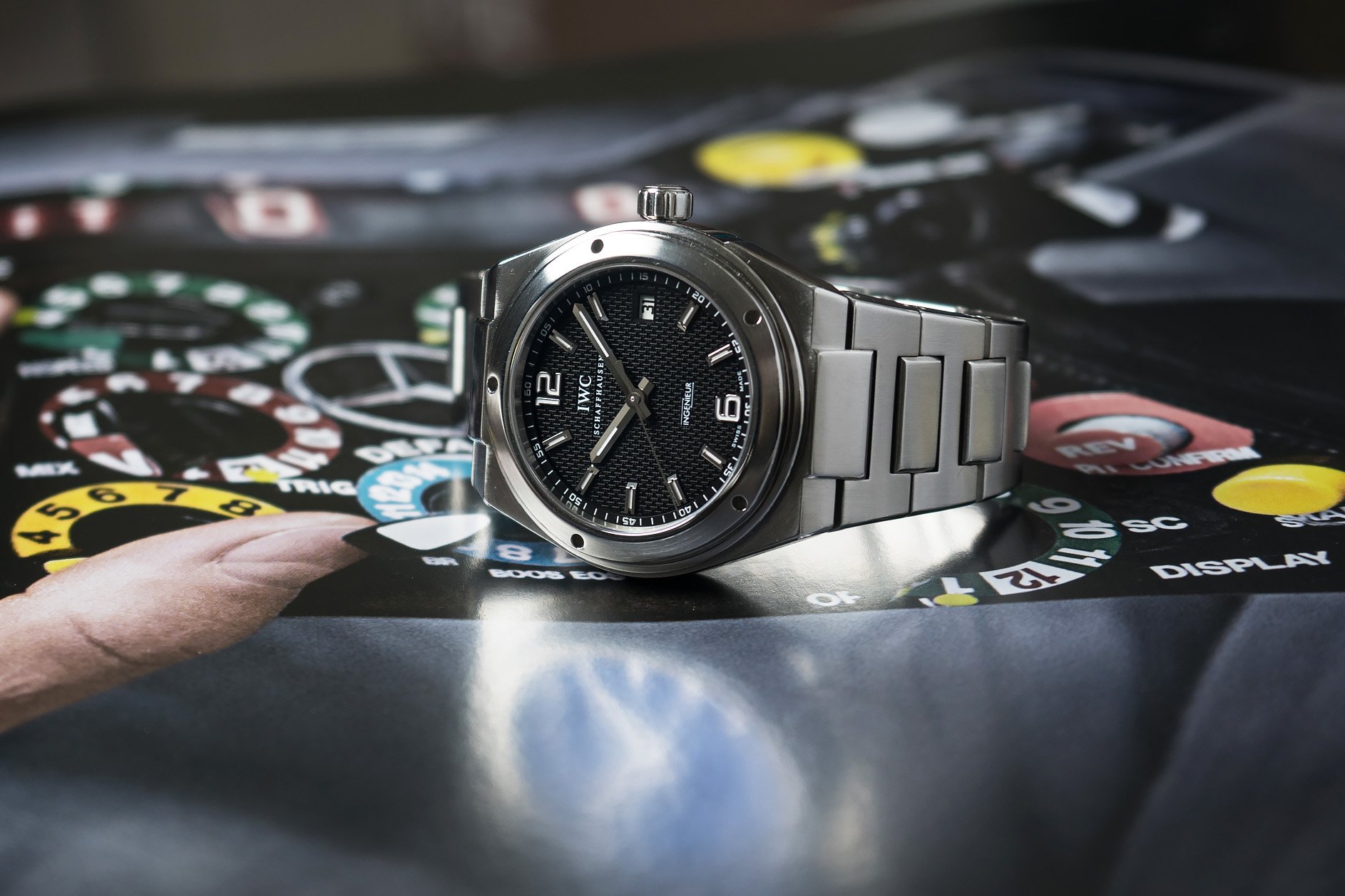
Image courtesy of WatchWorks Haarlem
My choice — IWC Ingenieur ref. IW3227-01
My pick for this list is the 2005 IWC Ingenieur ref. 3227. As some of you might know, I have a great love for Gerald Genta’s version of the IWC Ingenieur from the 1970s. Not too long ago, I wrote an article about Genta’s Ingenieur. It is part of our “Dear (Brand)” series about watches we would like to see make a comeback in a modern version. In the article, I explained how the ’70s Ingenieur reminded me of my father’s job as an engineer in the oil and gas industry when I was a young boy. I was fascinated by the huge rolls of graph paper that my father brought home whenever he had to check and adjust drawings for projects he was working on. It is the main reason that I will always have a special place in my heart for the IWC Ingenieur that Genta created.
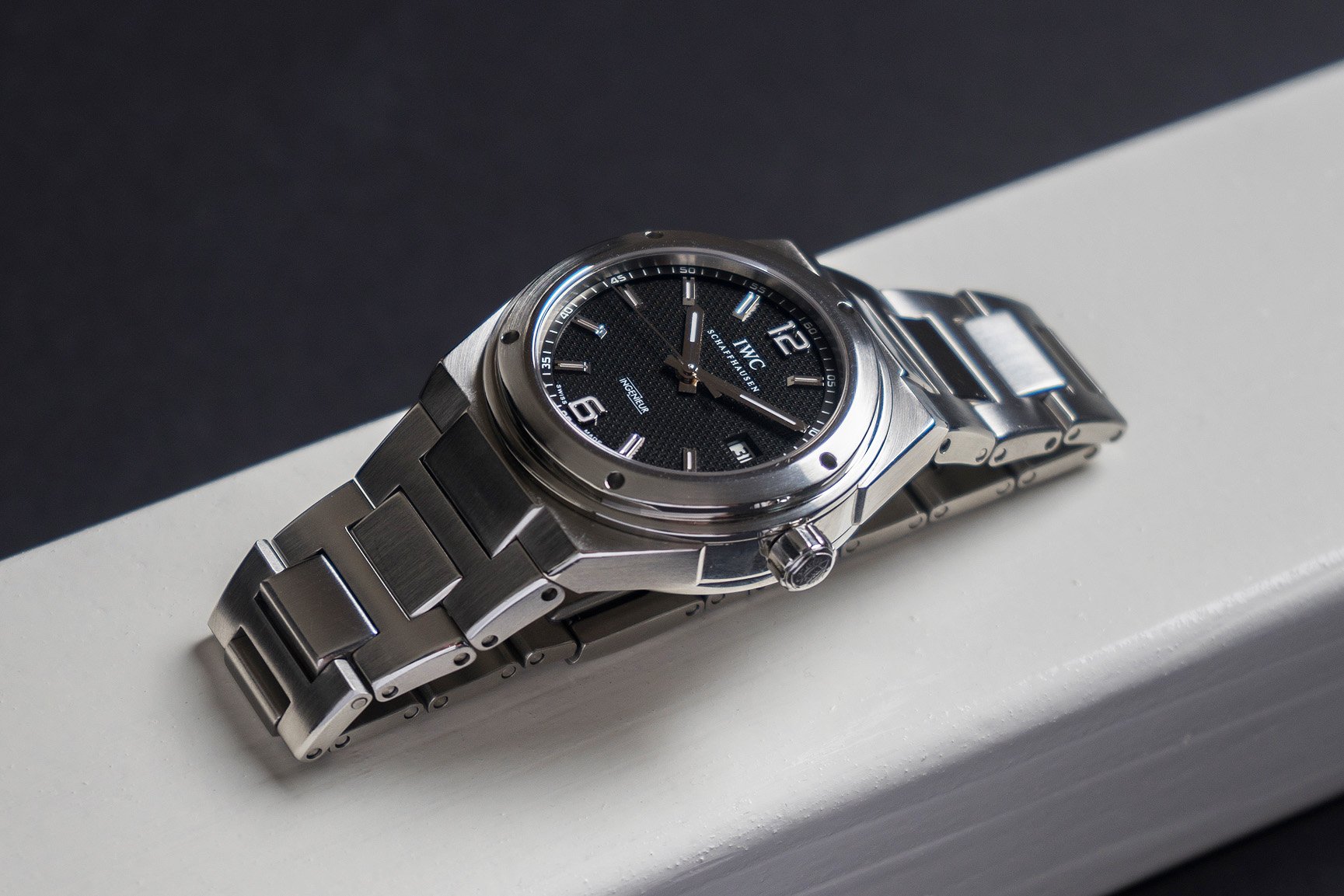
Image courtesy of WatchWorks Haarlem
In the same article, I also explained that buying an original Ingenieur SL1832 “Jumbo” is a costly venture. So that will probably never happen for me. The best modern alternative to that watch has been the Ingenieur IW3227 that IWC introduced in 2005. The watch was in production for only four short years before being replaced by the Ingenieur ref. 3229. That watch was the last of the Genta-inspired Ingenieurs (for now). The Ingenieur ref. 3227 from 2005 can be characterized as a chunky and heavy watch. It features a 42mm stainless steel case that is 14.5mm thick. On top of that, it features a heavy and sturdy bracelet. Ask anyone that owned this Ingenieur, and they will tell you it’s a serious chunk of steel.
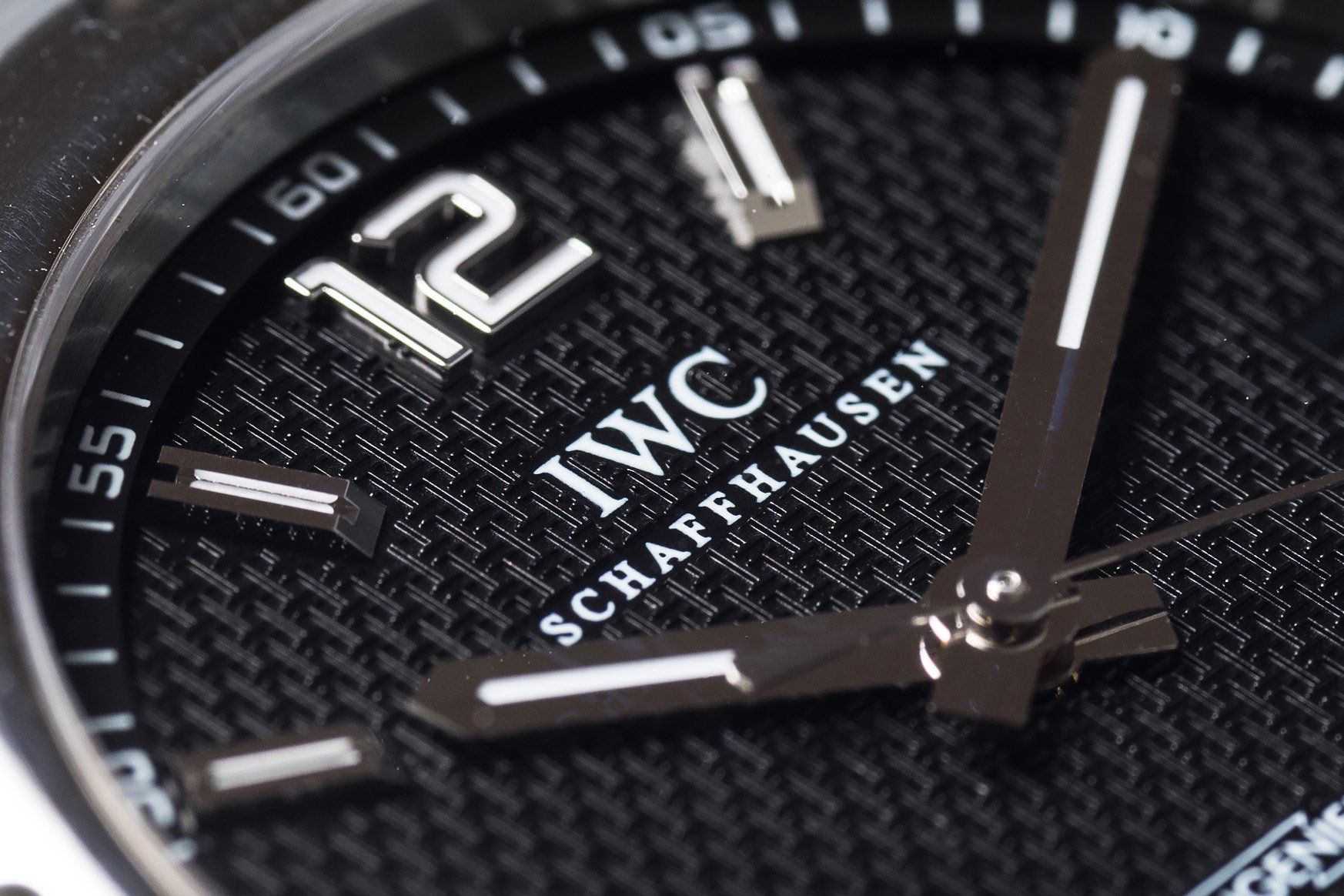
Image courtesy of WatchWorks Haarlem
It’s still on my wishlist
Inside the case, IWC equipped the watch with its in-house-produced caliber 80110. The automatic movement operates at 28,800vph and has 28 jewels with a 44-hour power reserve. The watch shows hours, minutes, and seconds and has a date window at 3 o’clock. I love the relatively simple dial layout with its large numerals at 12 and 6 o’clock. Furthermore, there is not much text to clutter the dial design. The simple design creates the opportunity for the dial structure to stand out. I love how IWC gave the dial a lot of texture, reminding me of the graph paper pattern on the original Genta Ingenieur that I love so much.
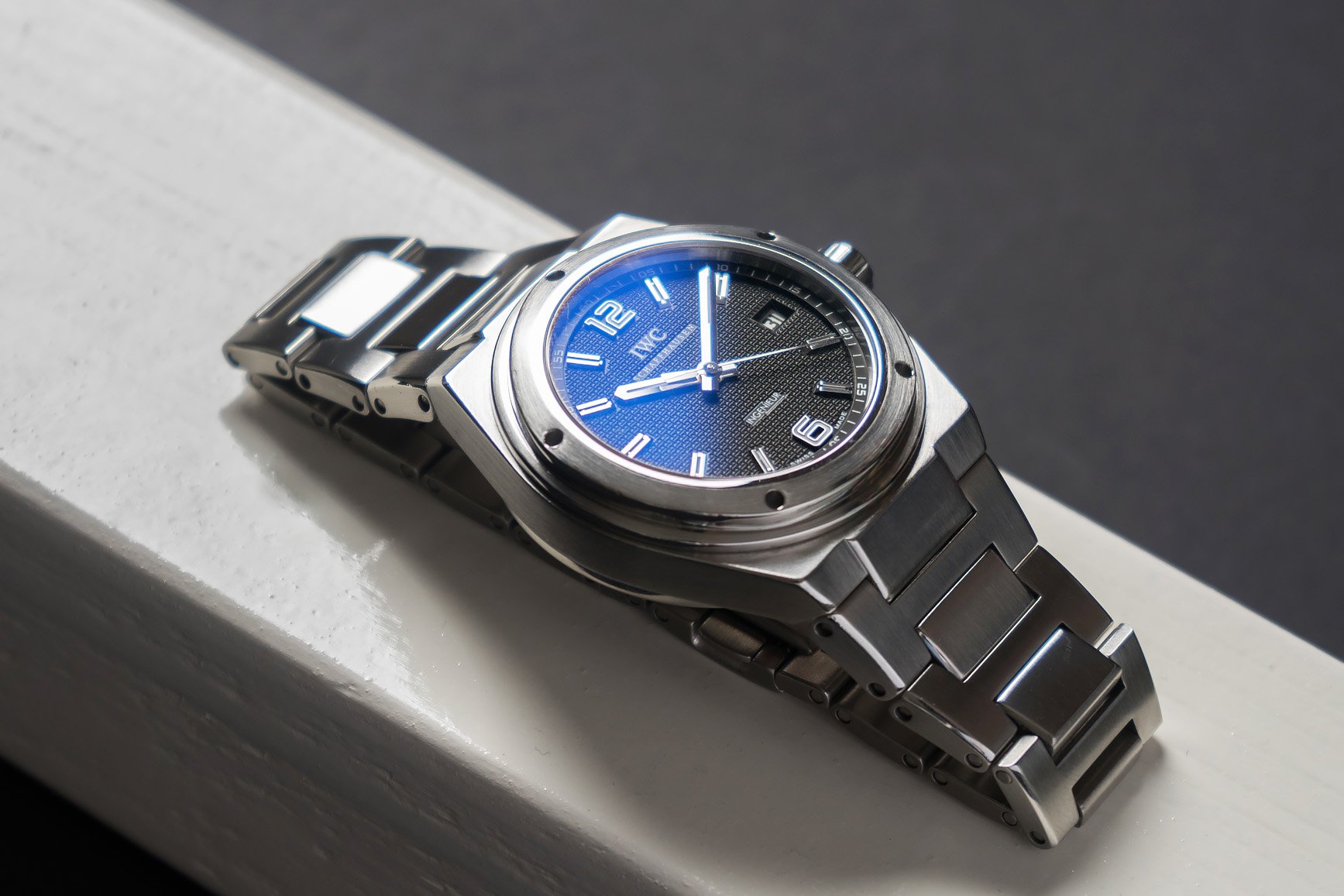
Image courtesy of WatchWorks Haarlem
IWC produced some incredible variations in very small numbers in the short production period. The first is the same watch with a salmon dial with ref. 3227-11 in 100 pieces. A second is ref. 3227-05 with a gray dial, created especially for members of the IWC forum in a limited run of 100 pieces. The last one is the ref. 3227-12, also known as the Ken Noguchi Edition, created to contribute to the Sherpa Fund. IWC produced 200 pieces of that model with a great brown dial and orange markers. If you have patience, you might be able to find one of these three beauties. And if you are in the market for the regular black-dial version, you will also need to have some patience. As the Ingenieur was never a commercial success, they don’t show up in large numbers. If they do, expect to pay roughly between €4K and €6K.
Money is no object #1 — IWC GST Chronograph Rattrapante ref. IW3715
This is slowly becoming a list of personal favorites because the IWC GST Chronograph Rattrapante is another one of those watches that stood out for me in the early 2000s. In particular, the pink salmon-dial version of the watch looked amazing. And it still does! As I explained in the article about the best IWC watches from the 1990s, IWC introduced the GST collection in 1997. I already referred to this watch in the article as there is something special about it. The GST name was an abbreviation for Gold, Steel, and Titanium, and IWC produced quite a few different GST models. Included among them was the GST Aquatimer ref. 3536 that I discussed in the article as mentioned above, the GST Automatic Chronograph ref 3707, the GST Perpetual Calendar Chronograph ref. 3756, and the GST Deep One ref. 3527.
For this list, picked the GST Chronograph Rattrapante version, as it is the one I remember best with its salmon dial. The second model that came with a salmon dial was the GST Perpetual Calendar Chronograph, but we’ll get to another, more iconic perpetual calendar from the brand in a bit. The GST line was introduced as a series of sports watches executed in different materials. As the name would suggest, most of the watches in the collection were available in gold, steel, and titanium. However, the Chronograph Rattrapante ref. 3715 introduced in 2001 only came in stainless steel and titanium. The steel version came standard with a white, gray, salmon, or blue dial. The titanium version was available only with a black dial. Additionally, there was a limited edition created for cyclist Jan Ulrich. The ref. 3715 was in the collection until 2004, so only three years.
The iconic salmon-dial version
The watch features a 43mm case that is a whopping 16.9mm thick. The reason is the modular rattrapante chronograph movement inside that we’ll get to in a minute. The version with the salmon dial features contrasting blue printing on the dial. Seeing pink in combination with blue is not a rarity at all. But I always prefer black printing on a pink salmon dial for some reason. Because it is a split-second chronograph, the watch features two central chronograph hands. The main chronograph hand is also dark blue, while the split-second hand stands out perfectly in red. Overall, I love how the colors work together in combination with the incredibly readable dial design with seven different hands. The integrated bracelet creates a very technical-looking tool watch that gets a lot of flair from the dial color alone. It’s that contrast that I love.
The movement inside the case is the automatic caliber 79230 based on the Valjoux 7750. The proprietary rattrapante mechanism was created by Richard Habring, who worked for IWC in the 1990s. It was fitted to the modified base movement, making it a relatively thick caliber and therefore increasing the overall height of the watch. The movement operates at 21,600vph, has 29 jewels, and features a 44-hour power reserve. The extra fourth pusher at the 10 o’clock position operates the split-second chronograph hand. Prices for the ref. 3715 go from roughly €4K to €8.5K. A salmon-dial version can be yours for around €5.5K.
Money is no object #2 — IWC Big Pilot’s Watch ref. IW5002
In 2002, IWC introduced quite possibly its most iconic watch ever. The IWC Big Pilot’s Watch ref. 5002 was modeled after the famous IWC Beobachtungsuhren or B-Uhren that the brand supplied to the German Luftwaffe in 1940. These oversized watches were a massive 55mm and were powered by pocket watch movements. IWC supplied the Luftwaffe with 1,000 pieces of the B-Uhren produced according to the Air Force Ministry specification Fl. 23883. Two dial variations were available for the B-Uhren, but IWC only produced the Type A dial that featured Arabic-numeral hour markers around the dial. The watches with ref. 431 were known as the Grosse Fliegeruhr in German, which means “Big Pilot’s Watch” in English
When the legendary Günther Blumlein was the CEO of IWC, he already wanted to reintroduce the Big Pilot’s Watch. Unfortunately, he passed away in 2001 before the new Grosse Fliegeruhr ref. 5002 was unveiled at Baselworld 2002. This modern version of the Big Pilot’s Watch featured a case that was just over 46mm, making it 9mm smaller than the original. The case is 15.8mm thick with a 22mm lug width and a 60m water-resistance rating. Its size and presence made the Big Pilot one of the most influential watches during the early 2000s when oversized watches were really popular.
A refined dial design
Overall, IWC refined the original design and used a different font type for the numerals on the dial. Looking at the dial, you will see that the watch does not feature a full set of numerals from 1 to 12. The 2, 3, and 4 have been sacrificed to fit the seven-day power reserve indicator. Furthermore, the 6 has been replaced by a date window. The date is printed in black on a white disc, and it often ranks as one of the few design elements that owners of the watch would have liked to see executed differently. But despite the design optimizations, the watch still featured the standout marker at 12 o’clock and the diamond-style screw-down crown.
Speaking of the crowns, the first series of the watches featured crowns with the famous fish image. Those crowns were replaced because they were known to leak, letting in moisture and dust. For that reason, IWC would replace the crowns with the “Probus Schaffhausen” crowns. Inside the large case, IWC equipped the watch with the in-house caliber 5011. This automatic movement operates at 18,000vph, has 44 jewels, and features a massive 168-hour power reserve that you can check on the dial. The watch comes on the characteristic chunky and riveted alligator strap. Besides being functional, it has also become an iconic design element. The IWC Big Pilot’s Watch ref. 5002-01 has become an industry icon and is a much-wanted collector’s piece. Expect to see prices between €7K and €10K depending on the condition and the crown.
Money is no object #3 — IWC Portuguese Perpetual Calendar ref. 5021-01
The last watch on this list is the IWC Portuguese Perpetual Calendar ref. 5021. I already hinted at a perpetual calendar earlier in the article. If you know anything about IWC’s history, you probably would have guessed it was going to be this watch. The watch was first introduced in 2003 and featured two important upgrades compared to the Da Vinci models that IWC fitted with Kurt Klaus’s famous perpetual calendar mechanism. With some adjustments, IWC ensured that the perpetual calendar would be only one day off in 577 years versus 177 years with the Da Vinci. On top of that, IWC equipped its new Portuguese Perpetual Calendar with a movement from the in-house 5000 series, upping the power reserve to an impressive seven days. As a result, the Portuguese Perpetual Calendar ref. 5021 has become one of the brand’s biggest icons.
Additionally, IWC introduced the incredibly cool double-hemisphere moonphase indicator. Generally, watches feature a moonphase indicator that shows the moon phase in the northern hemisphere. But if you live below the equator, the phase of the moon appears opposite to how it would above the equator. So people who live in Australia, South Africa, or Brazil are generally out of luck when it comes to moonphase watches. IWC eventually offered the watch with either traditional or double-hemisphere moonphase indicators. But as the latter has become an IWC trademark, that’s the one to go for if you ask me.
Platinum takes the first prize
The watch features a case that is a little over 44mm in diameter and 15.4mm in height. It has a lug-to-lug measurement of 52.4mm and a 22mm lug width as well. So this is a big watch, but thanks to the downturned lugs, it sits quite comfortably on your wrist considering its size. The watch came with the choice of a yellow gold, rose gold, or white gold case. Additionally, a lucky 250 people could buy a heavy limited-edition platinum version. I love that version, as it sports a black-and-white color scheme that almost looks too simple for what it actually is. But it looks so classy. Talk about an understated but incredibly elegant watch for the true connoisseur.
Inside the case of any of the first-generation Portuguese Perpetual Calendar models, you will find the in-house-developed caliber 50611. The automatic movement is the first iteration of the perpetual version of the 5000-series. It operates at 18,000vph and has 66 jewels with an impressive seven-day power reserve. Approximately two years later, IWC updated the movement to the caliber 51612 that saw the frequency upped to 21,600vph. Another two years later, IWC updated the movement again to the caliber 51614 that was used from 2007 onwards. When it comes to choosing an IWC Portuguese Perpetual Calendar ref. 5021-01, I’d say, go platinum! Just joking, of course. Although it looks stunning, it fetches between €35K and €40K. The gold versions would be a better option as they usually go for between €15K and €25K. What you get in return is an absolute classic!
Final Thoughts
I can only cover a few of the great number of classics that IWC produced in this decade. When it comes to IWC, there is an incredibly rich world of different models and references to discover. The 2000s were an amazing time for the brand with many great introductions. I could have easily picked another five models for this list that I love. With Kurt Klaus and Richard Habring, the brand had some industry giants on board that created some of the best watches of the decade and propelled IWC into the forefront of the watch industry. With Georges Kern at the helm, IWC found its way to a bigger audience and turned into the brand as we know it today.
As with all the other brands, it is important to do your homework. Unfortunately, the world of IWC watches suffers from fake pieces. That’s why it is good to do some required reading. If you want to find out more about IWC, there are plenty of books and websites that can help you get an idea of the brand’s rich history. One of the books is IWC Schaffhausen: Engineering Time Since 1868 by Manfred Fritz, Paulo Coelho and Enki Bilal. Additionally, the brand also has its own IWC collector’s forum that you can subscribe to. Finally, the active community at WatchUSeek also has its own dedicated IWC brand forum.
We’ll be back with a new installment next week. In the meantime, let us know what your favorite IWC watches from the 2000s are in the comments section below!

